SDA Members In Print: How I Self-Published *New Potatoes*
April 27, 2012
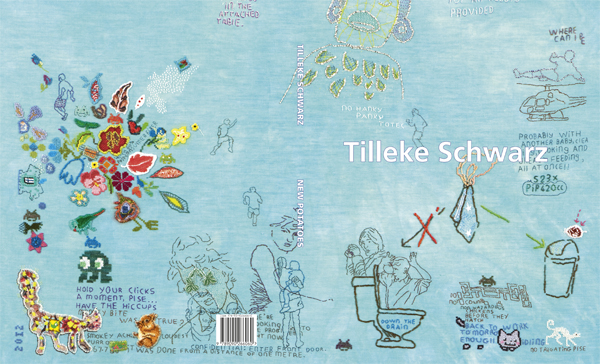 Hooray! New Potatoes – my new book – has been published. Self-published, that is.
Hooray! New Potatoes – my new book – has been published. Self-published, that is.
After my first book, Mark Making, sold out, I immediately wanted to produce another. I had new work to show! In my country, The Netherlands, it is hard to find a publisher or to get financial backing or support these days.
So I decided to self-publish at my own expense. There are quite a few choices to make when producing a book yourself. If you’ve been thinking of doing this yourself, here are some tips:
THE ECONOMICS OF SELF-PUBLISHING
My primary focus (and concern) was the financial challenge.
So I educated myself and made the decisions to:
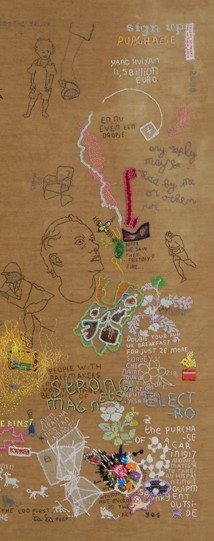 1) PRINT A LARGE EDITION
1) PRINT A LARGE EDITION
This meant 3000 instead of the usual 500 or 1000 copies. Printing more books only costs a bit extra and enables all books to be sold at a lower price. This is important since I sell both directly and via retailers (who want to make a profit on the sale). I ordered 1500 copies of my first book, Mark Making, then had to order a second edition. It cost a lot more than ordering 2500 copies at once.
2) PRODUCE WITHIN YOUR MEANS
Strive for a good and informative book – not for the best book ever. Some art books win prizes because of their unique look and special printing, paper, cover, etc. Most of these extras make the book a lot more expensive. Unless you are a very famous artist or exhibiting at expensive galleries I advise you not to take such risk or to be too extravagant.
3) GET THE FULL STORY ON COSTS
Research and calculate ALL costs in advance, so you know if you can afford this project.
Books are primarily an instrument of self-promotion. But why not make a bit of money since you’ve invested so much time and effort? Decide on a sale price that enables you to reach a break-even point when you have sold about 50 – 70% of your books.
Determine all costs and calculate what one book will cost in advance. Then decide at what price you intend to sell it to retailers (book cost + a bit extra for you) and what would be the sales price (retailers price + 40% or even more). Compare this sales price with other art books and decide if it is a reasonable price that will make sense to buyers. If not, analyze how to lower the cost or ask for advice. For my book it made a lot of difference to produce the book 22 cm. wide instead of 23. (These figures may differ for other printing companies.)
 MAKING DECISIONS ABOUT CONTENT
MAKING DECISIONS ABOUT CONTENT
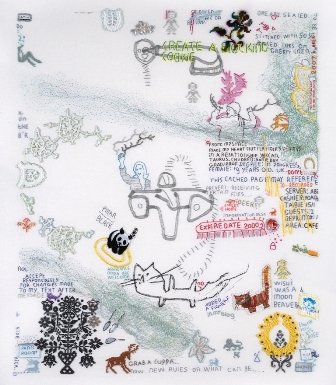 ART BOOK OR HOW-TO BOOK?
ART BOOK OR HOW-TO BOOK?
It is important to decide in advance what kind of book you want to publish. I chose to produce an art book – not a practical book on how to make a Tilleke Schwarz embroidery. The focus is on my work. Because my embroidery is very detailed, I reserved several pages for each work. This allows plenty of room for large details and background information. I added a few small chapters on my inspiration and favourite artists as well as techniques and materials used, since this information is usually of interest to readers. I engaged a professional writer and also wrote part of the book myself.
IN WHICH LANGUAGES?
I live in The Netherlands and hardly anybody outside my country speaks Dutch. So I needed to use 2 languages in the book: Dutch and English. My knowledge of English is sufficient for daily use thanks to my year as an exchange student in California. However, I preferred to invite a professional translator (native speaker) to improve my text and translate the main interview. Of course involving a professional writer/translator costs some money, but it is well worth it. Having your book in more languages could be beneficial if you are active in the international market.
GREAT PICTURES!
I already had good images of my work – by a professional – made for general PR reasons. High-quality images are the most important part of the book – and well worth the investment.
 MAKING DECISIONS ABOUT DESIGN
MAKING DECISIONS ABOUT DESIGN
DIY OR HIRE A PRO?
The first choice is between do-it-yourself design or hiring a professional designer. I chose a professional designer because I am not good at designing with computer graphic design software. From the start, the designer needs to know what you want: size of your book, number of pages, text and images, etc. Of course you can discuss every detail before they begin – but that makes the process take longer and get more expensive and unpredictable.
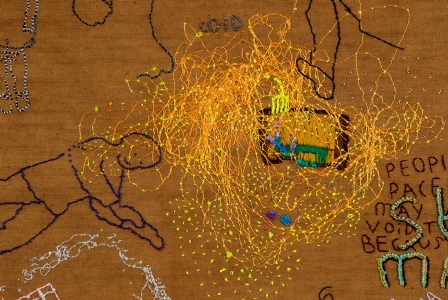 I had everything prepared before involving the designer; all texts, translations and images. As it turned out, the designer had a special way of working. Within a few weeks he designed the entire book. This first concept came by email and it was quite a shock as it was not my taste at all. At first it felt uncomfortable to explain that the design had to be done over. But the designer was very relaxed about it and explained that he always works this way and I was invited to make any comment or change I wanted. In his experience, it is easier to communicate about a concept that to discuss in advance a lot of details. After that we had several sessions together at a computer to improve every page of the book. The designer preferred to make the changes when I was around so I could immediately respond to the result. After that, I received the second concept at home and I could make final improvements – which we did together at a computer. This way of working was quite new for me. But it worked well; the result is truly my book.
I had everything prepared before involving the designer; all texts, translations and images. As it turned out, the designer had a special way of working. Within a few weeks he designed the entire book. This first concept came by email and it was quite a shock as it was not my taste at all. At first it felt uncomfortable to explain that the design had to be done over. But the designer was very relaxed about it and explained that he always works this way and I was invited to make any comment or change I wanted. In his experience, it is easier to communicate about a concept that to discuss in advance a lot of details. After that we had several sessions together at a computer to improve every page of the book. The designer preferred to make the changes when I was around so I could immediately respond to the result. After that, I received the second concept at home and I could make final improvements – which we did together at a computer. This way of working was quite new for me. But it worked well; the result is truly my book.
PRINTING & BINDING
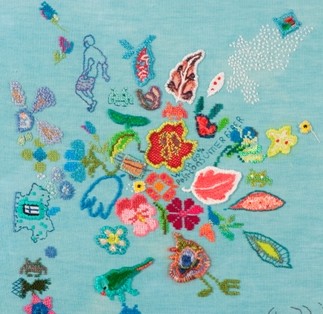 Before deciding about printing and binding, I asked several colleagues for advice. After that I decided the basic specifications for the book (amount of pages and pictures, hard or soft cover, size, quality of printing, etc.). If this is all very new for you, my advice is to use specs from another book that looks similar to the book you have in mind. These specs can be used to get comparable price quotes from different designers and printing companies so that you can determine the best offer.
Before deciding about printing and binding, I asked several colleagues for advice. After that I decided the basic specifications for the book (amount of pages and pictures, hard or soft cover, size, quality of printing, etc.). If this is all very new for you, my advice is to use specs from another book that looks similar to the book you have in mind. These specs can be used to get comparable price quotes from different designers and printing companies so that you can determine the best offer.
At this point you still can make every – and any – change you want. Printing companies and designers are usually happy to inform you about any detail and what difference it makes in the price.
GETTING IT OUT THERE: PACKING & POSTAGE
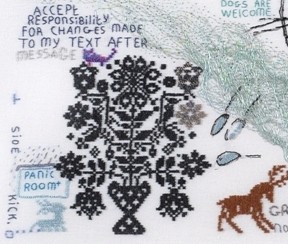 Postage is often expensive; this can add a lot to the costs of getting your book out there. For this reason, you may choose to be mindful of the size and weight of the book as you design it. In general, the weight of 1 book has to stay below 500 grams (about 1 pound); this is the weight of the book + packing + an invoice. The size (book + packing) should be mailbox-friendly (fit in a mailbox).
Postage is often expensive; this can add a lot to the costs of getting your book out there. For this reason, you may choose to be mindful of the size and weight of the book as you design it. In general, the weight of 1 book has to stay below 500 grams (about 1 pound); this is the weight of the book + packing + an invoice. The size (book + packing) should be mailbox-friendly (fit in a mailbox).
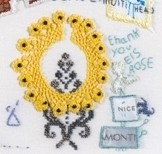 This may seem all very obvious, but I really had to watch that my 72 paged book stayed well below 500 grams. (Check both local and international postal/shipping regulations in your country).
This may seem all very obvious, but I really had to watch that my 72 paged book stayed well below 500 grams. (Check both local and international postal/shipping regulations in your country).
Of course you can choose to make a larger book with heavy paper and a hard cover, but people who are interested in buying it will look at the total price – meaning what additional fees you are charging for shipping and handling – unless you mainly sell at galleries and shops.
NEW POTATOES: THE FINISHED PRODUCT
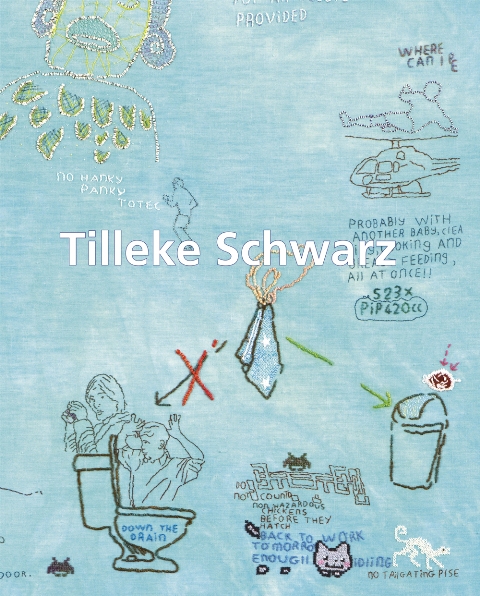 New Potatoes shows my embroidered work from 2007 – 2012, plus 2 special works made of buttons. It runs 72 pages and contains more than 90 full-colour images (many of them very large). I have avoided white (blank) pages in the book, though their usage is the norm. The book costs 26 euro (about $40 US) including S & H to the USA and other countries outside Europe. For Europe it costs a bit less depending on the country.
New Potatoes shows my embroidered work from 2007 – 2012, plus 2 special works made of buttons. It runs 72 pages and contains more than 90 full-colour images (many of them very large). I have avoided white (blank) pages in the book, though their usage is the norm. The book costs 26 euro (about $40 US) including S & H to the USA and other countries outside Europe. For Europe it costs a bit less depending on the country.
For more information – and to download a preview pdf of my book, please email me at info@tillekeschwarz.com
If you would like to order books for your shop or students, I offer a retailer’s price with a 4 book minimum.
________________________________________
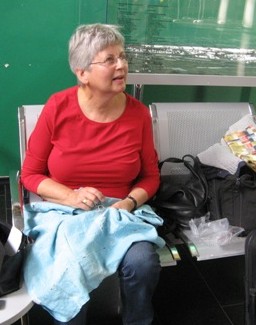
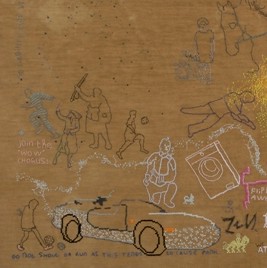 Tilleke Schwarz, an SDA member for many years, lives in The Netherlands. She makes contemporary art using embroidery. She has exhibited, taught workshops and lectured all over the world.
Tilleke Schwarz, an SDA member for many years, lives in The Netherlands. She makes contemporary art using embroidery. She has exhibited, taught workshops and lectured all over the world.
Visit her website at:
www.tillekeschwarz.com
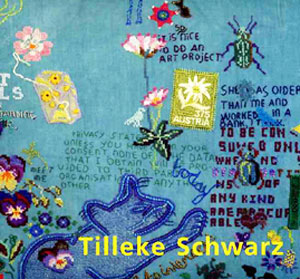
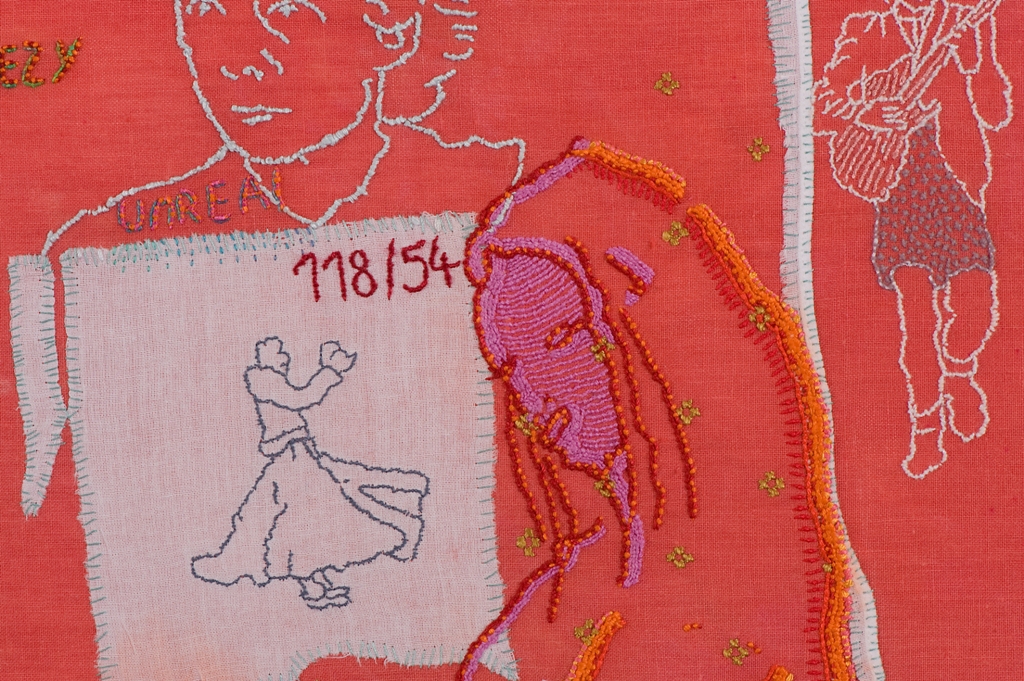
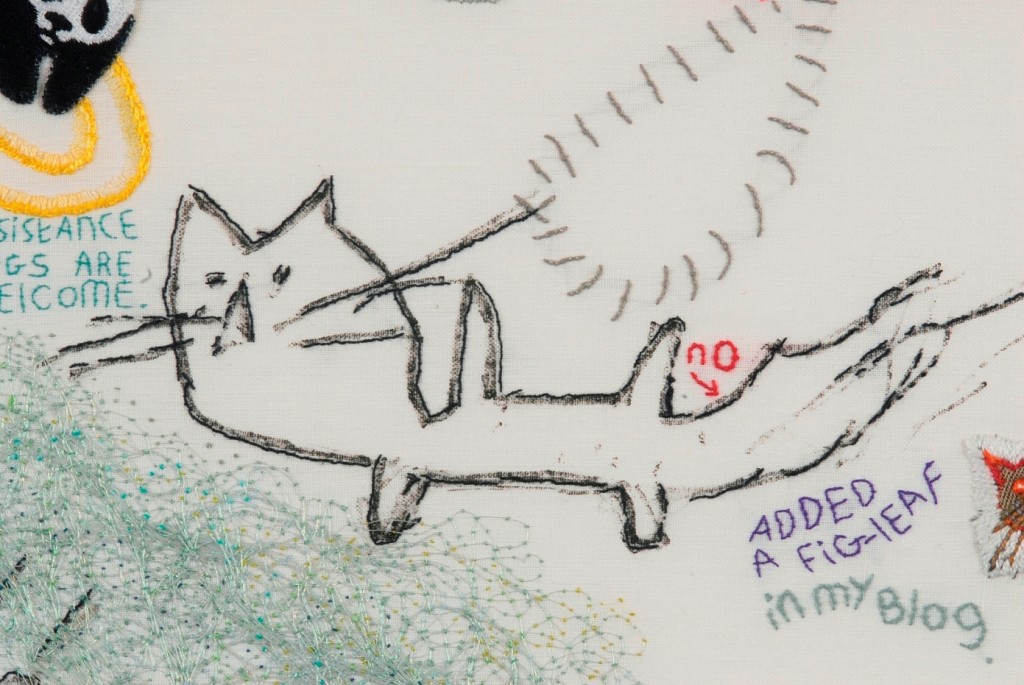

7 Comments
Katalin says
May 8, 2012 at 11:03 am
So inspiring....will need to get a copy.
Tilleke Schwarz says
November 27, 2014 at 5:48 pm
you can order it directly from me, email to info@tillekeschwarz.com
Tilleke Schwarz says
November 28, 2014 at 2:42 am
Sorry about replying so slow. I sell copies directly from The Netherlands. Do send an email to info@tillekeschwarz.com
Leesa Hubbell says
May 8, 2012 at 2:26 pm
Thanks, Katalin. SDA NewsBlog posts are formatted to be saved as a pdf and printed.
Monika Aebischer says
May 25, 2012 at 6:39 am
Thank you so much Tilleke, such great insight into this adventure of book self-publishing. I've learned a lot reading it and I love your work.
Tilleke Schwarz says
November 27, 2014 at 5:47 pm
thanks
Book Review – New Potatoes by Tilleke Schwarz says
March 4, 2013 at 3:04 am
[...] You can buy Tilleke's book directly from her website and I would encourage educators to buy it for their students as an example of how great contemporary embroidery can be. You can also find out how Tilleke self-published in this Surface Design Association NewsBlog article. [...]
Related Blog Articles
Embroidery
“Longing for Home: Stories of First Generation Australian Women” by Sofie Dieu
Embroidery
“Stockyards Gallery First Annual Fiber Art Exhibit” by Mary Elmusa
Embroidery
SDA Book Club: “My Bed” Behind the Scenes with Salley Mavor